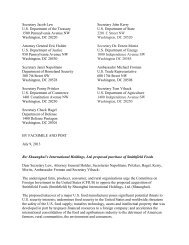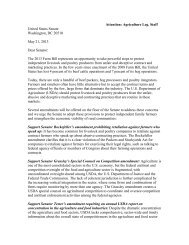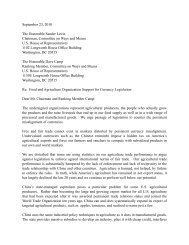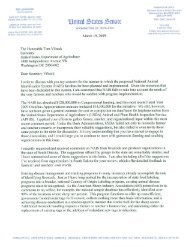Exhibit 8, 100416 Brazil FMD Risk Evaluation - R-Calf
Exhibit 8, 100416 Brazil FMD Risk Evaluation - R-Calf
Exhibit 8, 100416 Brazil FMD Risk Evaluation - R-Calf
Create successful ePaper yourself
Turn your PDF publications into a flip-book with our unique Google optimized e-Paper software.
CSF<br />
CSF has acute and chronic courses. The severity of the disease depends largely on the age of the<br />
animal and the virulence of the viral strain, with young animals usually more severely affected than<br />
older animals. In older breeding pigs the course of infection is often mild or even subclinical,<br />
whereas mortality rates may reach 90 percent in young pigs [35]. Low virulence strains may<br />
manifest primarily as poor reproductive performance and birth of piglets with neurologic defects<br />
[35].<br />
SVD<br />
SVD is typically a transient vesicular disease of pigs. The virus causes essentially no mortality, and<br />
infected pigs generally recover within 1 week (on occasion, recovery may take up to 3 weeks).<br />
Some strains produce only mild clinical symptoms or are asymptomatic. Morbidity rates may be<br />
low throughout a whole herd but high in certain pens [29].<br />
ASF<br />
ASF is a highly contagious hemorrhagic disease of pigs. All age groups are equally susceptible.<br />
With high virulence forms of the virus, ASF is characterized by high fever, loss of appetite,<br />
hemorrhages in the skin and internal organs, and death within 2 to 10 days on average. Herd<br />
mortality rates may be as high as 100 percent [30].<br />
Economic consequences<br />
The overall cost of control and eradication depends on the mitigation or policy options chosen to<br />
control and eradicate the disease. Potential costs include costs for disease control measures such as<br />
imposing quarantine measures and movement controls, direct costs related to stamping out of<br />
affected herds, indemnity payments, vaccination costs, and costs for surveillance and laboratory<br />
testing. For disease-free countries like the United States that have a substantial export market for<br />
livestock and livestock products, the preferred option for control and eradication has traditionally<br />
been to stamp out infected herds without the use of vaccine.<br />
The U.S. policy for most significant foreign animal disease emergencies is to follow strict quarantine<br />
measures and stamp out infected and contact herds. Officials also assess the need for strategic<br />
vaccination, and carry out vaccination if necessary. Available data do not allow quantification of the<br />
number of herds or farms that could be infected if one of the diseases under evaluation were<br />
introduced into the United States. Nevertheless, the cost of control, eradication, and compensation is<br />
likely to be significant.<br />
<strong>FMD</strong><br />
A few studies have estimated the potential consequences of an <strong>FMD</strong> outbreak in the United States.<br />
Bates et al (2003) used results from an <strong>FMD</strong> simulation model to estimate the direct costs associated<br />
with indemnity, slaughter, cleaning, and disinfecting livestock premises for various vaccination and<br />
APHIS <strong>Evaluation</strong> of the Status of the <strong>Brazil</strong>ian State of Santa Catarina 66











